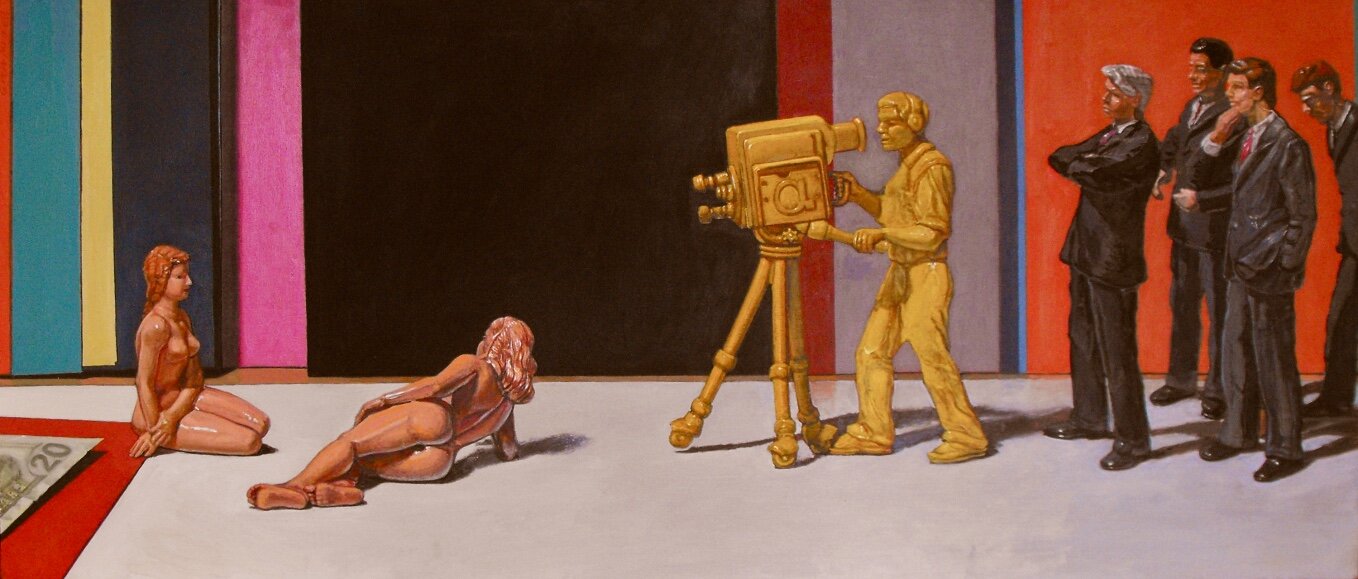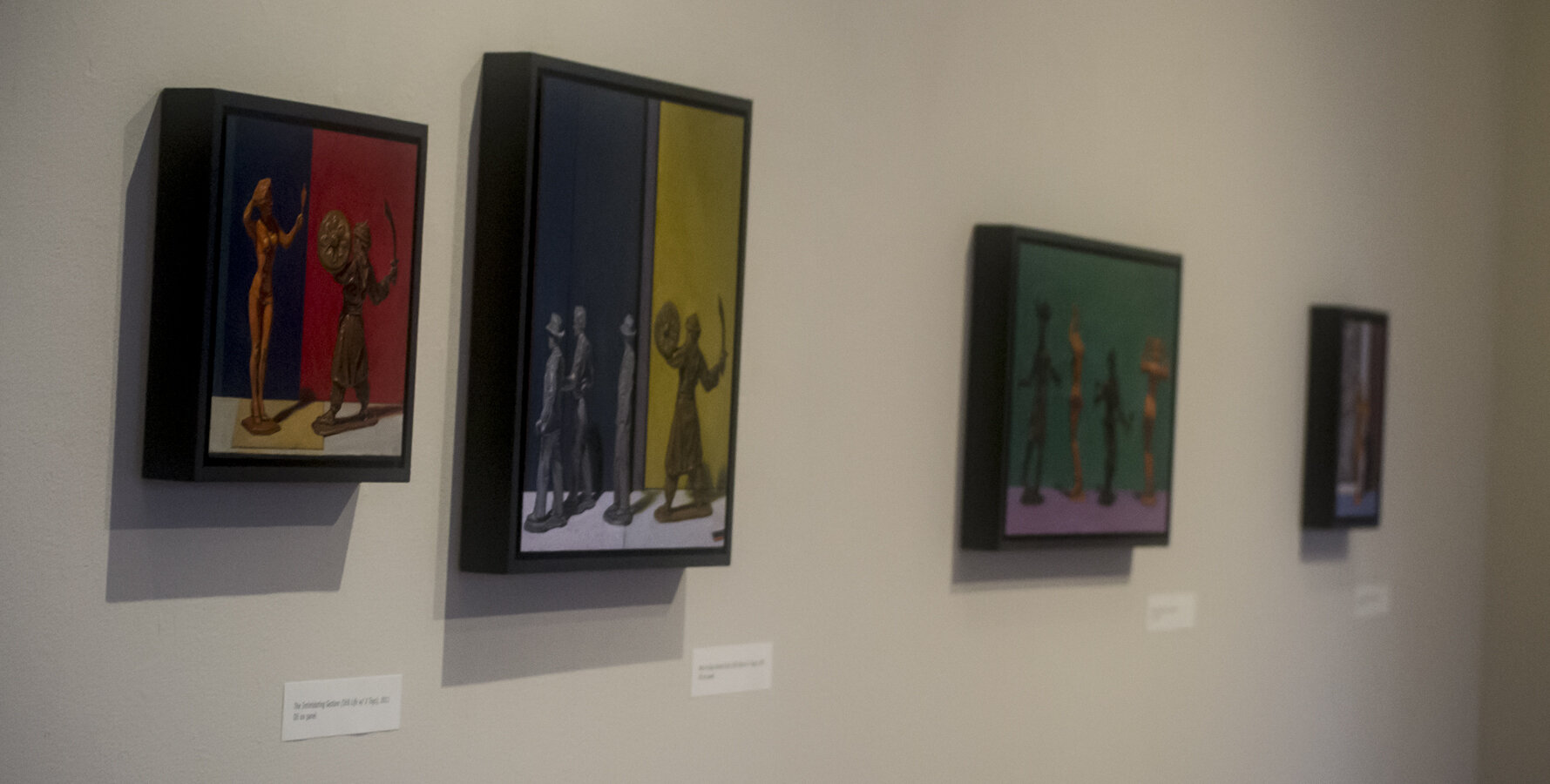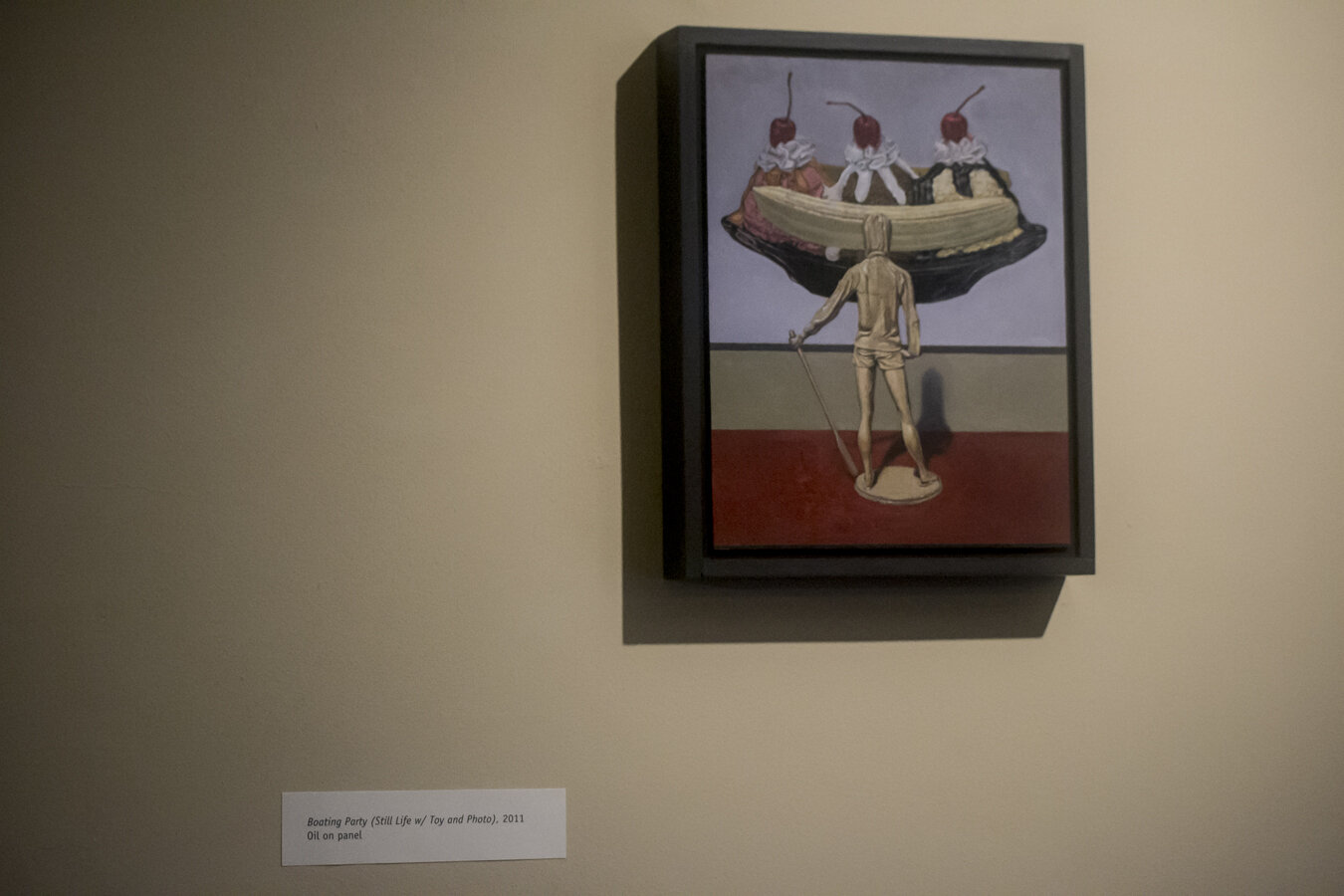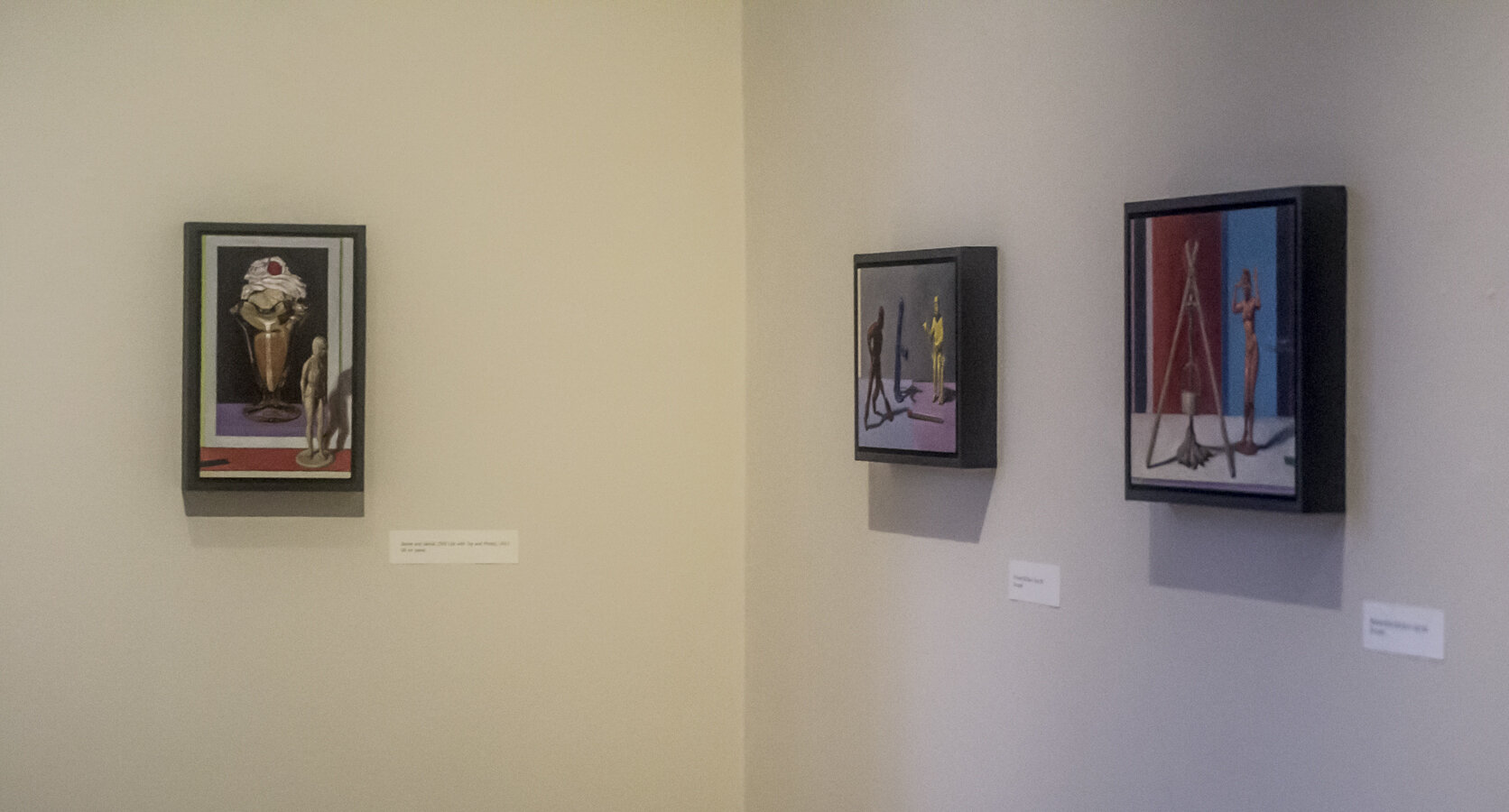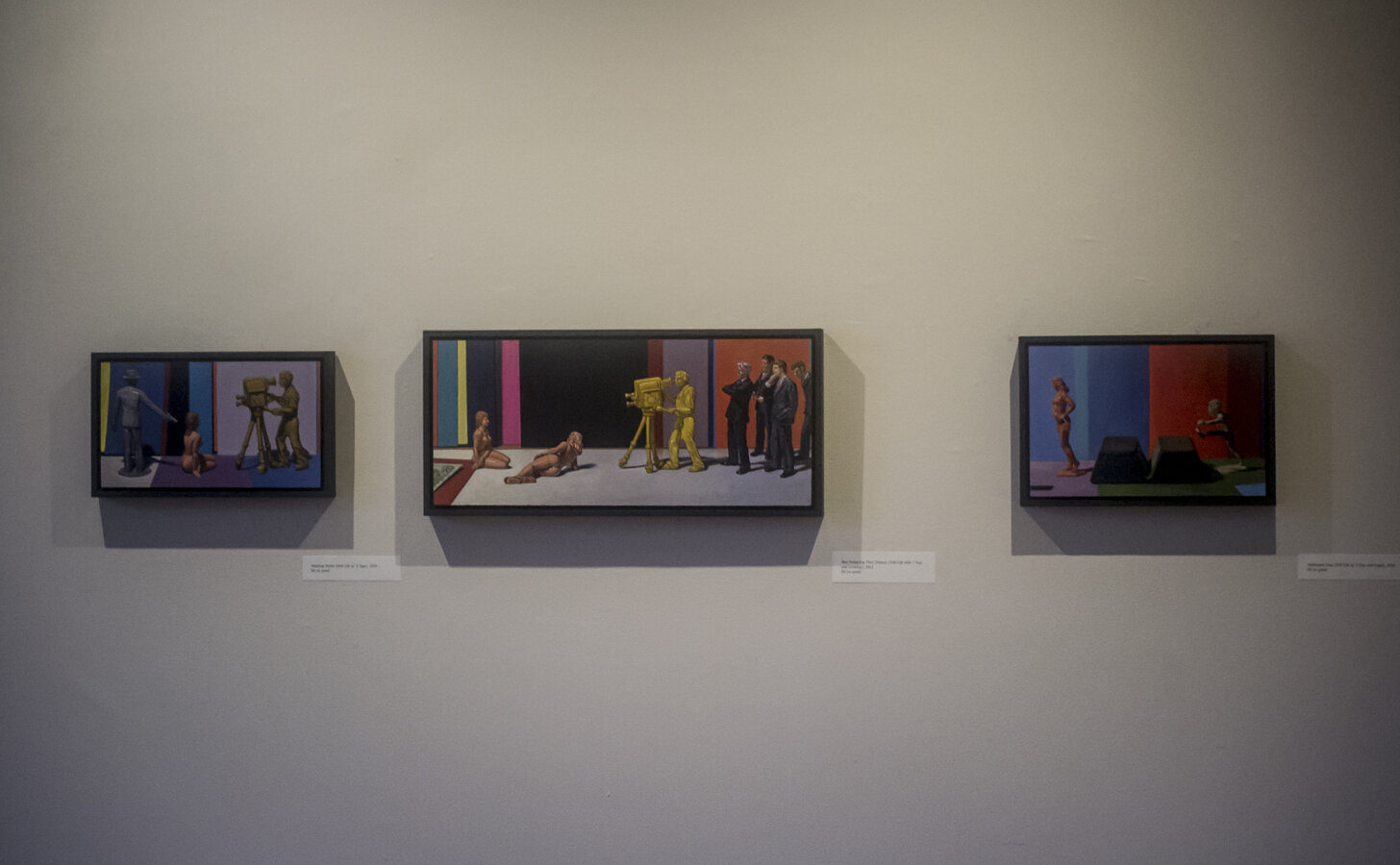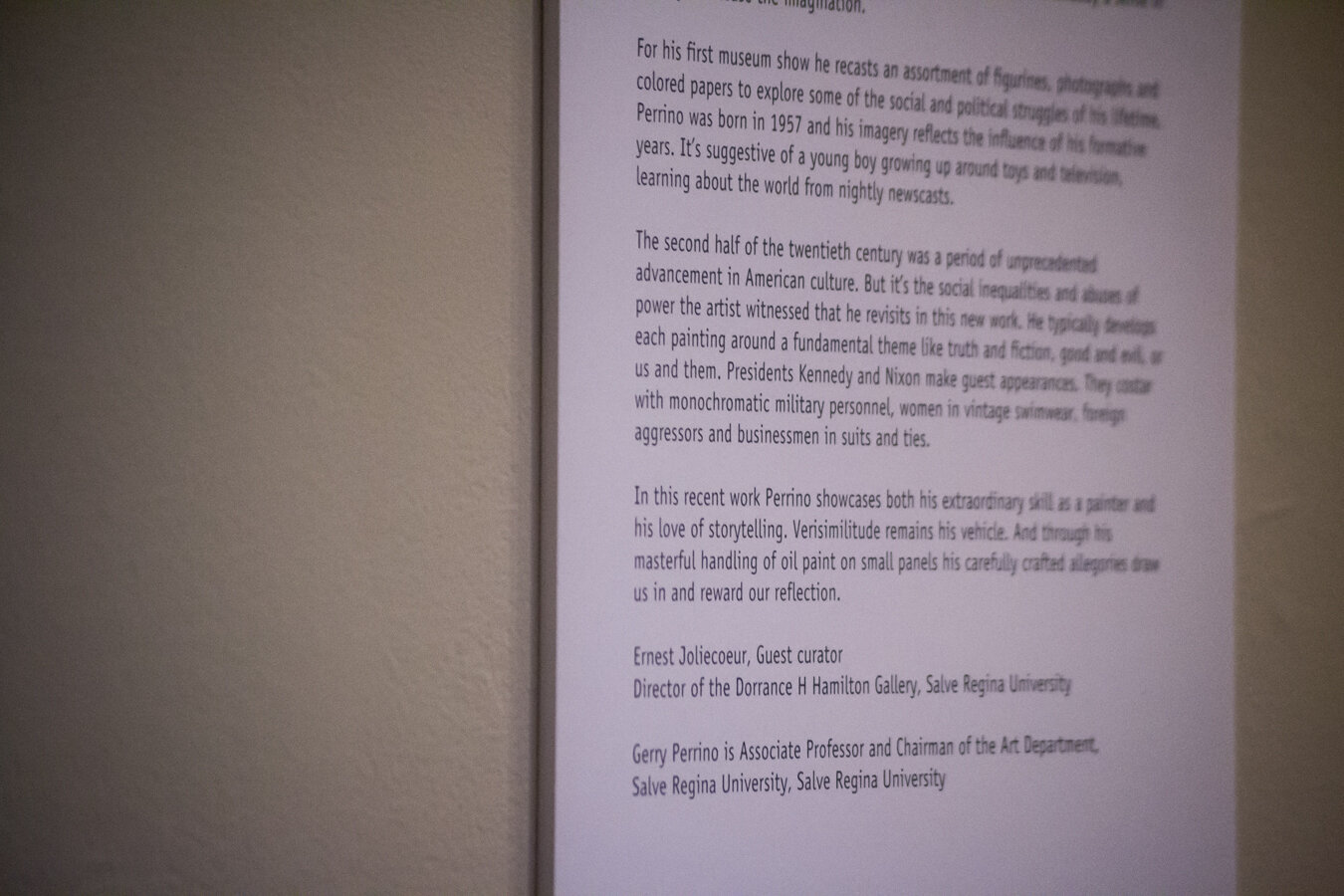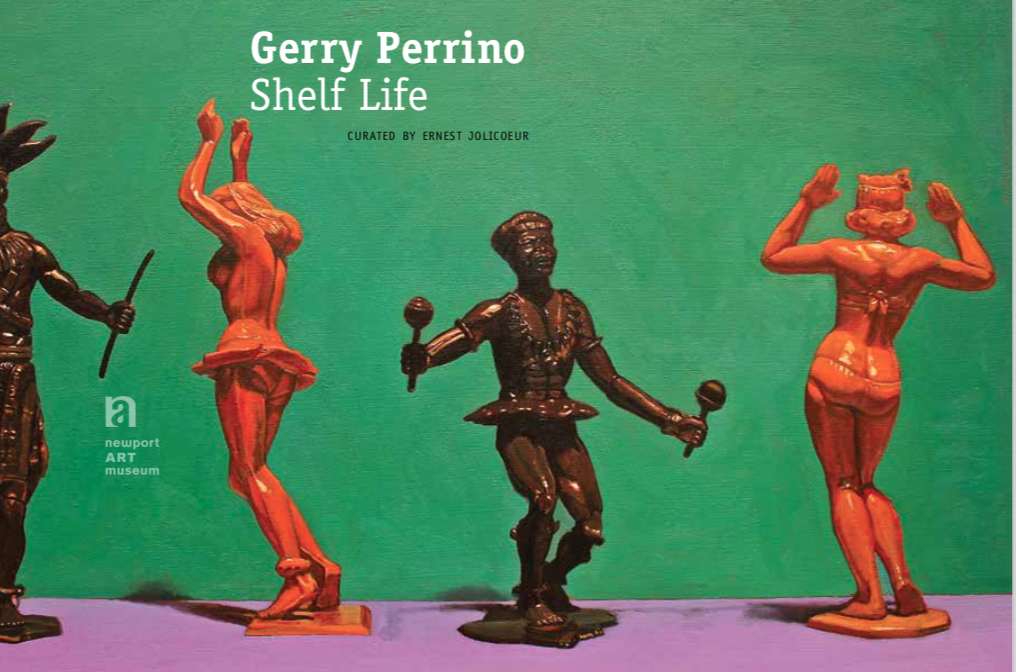
Shelf Life
Artist’s Statement for this exhibit, from the accompanying catalog
Over the past few years, my work has been focused on symbolism in still life. I have not however, been concerned with a traditional, prescribed symbolism that can be derived from ancient sources. Rather, my aim has been to highlight the phenomenon that a specific object’s symbolism is largely dependent on that object’s direct milieu. This exhibit, entitled Shelf Life, offers a different perspective on my work. I am here considering the paintings in terms of the narratives that are represented in this work. I guess one could say in the past, I have been interested in emphasizing how things develop and bear symbolic meaning. Whereas now, I am more interested specifically what they might be saying. I am grateful for the concentrated focus that this exhibit has allowed me.
My long time interests in psychology, politics and history have informed these works. I am fascinated with what seems an innate human character flaw that often keeps us from seeing the truth, what might be best for us as individuals, or our correct way ahead as a species. A central theme seems to revolve around the persistent struggle between what Freud has deemed to be the id and the superego. I do not attempt to offer solutions to problems. Rather, I am content to hold a metaphoric mirror to these (perhaps ultimately fatal) human frailties. I feel that it is only in confronting truth, be it good or bad, that humans can find the correct way forward.
I have specific Narratives in mind for each of the images in this exhibit. That said, it should be noted that an object or form almost always serves as the initial point of the departure. Objects, when places in proximity with each other, set the spark for a narrative, which is then nurtured to fruition.
Titles give clues to the exact nature of my intended narratives. While I develop clear interpretations for each piece, I have found that the fresh perspective that viewers bring to the work has at times uncovered avenues of thought that I had not previously considered. I welcome such departure from my own intended meanings, finding that viewer suggestions have ultimately served to inform my work and have expanded my conceptual horizons.
I am deeply enamored with the notion of irony and I enjoy clever wordplay, especially the double entendre. If one looks carefully at both image and title, they will find the aforementioned irony and wordplay to be abundantly evident. On the subject of titles, one will note that each title has two distinct components. The first part refers directly to the narrative that I feel a given work represents. This is followed by a parenthetical title that alludes to the “contextual inventory” of that still life’s contents. In the framework of the larger Syntactic Structures exhibit, which took place on Boston last year, the parenthetical title brought focus to the importance of context and syntax in shifting the symbolism of objects from one piece to the next. However, in this exhibit, the first title, which helps to frame the narrative that I hope to achieve, takes on more importance.
John Colan of Hallspace has written that I, “…create narratives, commentary on war, human relationships, and the destructive repetitiveness of human nature.” I feel that this is a rather apt reflection of my general intentions. What I find most interesting is that he came to this understanding solely through viewing my work. I eagerly look forward to discovering the impressions and response that this exhibit will yield.
"Jubilee/Still Life with 4 Toys", oil on panel, 2011
"Shotgun/Still Life with 3 Toys", oil on panel, 2010
"Venus/Still Life with Toy and Photo", oil on panel, 2011
"Fat Man/Still Life with Toy and Photo", oil on panel, 2011
"Tip of the Spear/Still Life with 10 Toys", oil on panel, 2010
"Boating Party/Still Life with Toy and Photo", oil on panel, 2011
"9/26/60, In Focus/Still Life with 3 Toys", oil on panel, 2011
"Adolescent Leap?Still Life with 2 Toy and Lead Ingots", oil on panel, 2010
"The Intimidating Gesture/Still Life with 2 Toys", oil on panel, 2010
"Men Protecting Their Interests/Still Life with 7 Toys and Currency", oil on panel, 2011
"11/22/63, Wrong Focus/Still Life with 3 Toys", oil on panel, 2010
"Bull!/Still Life with 2 Toys", oil on panel, 2012
"Men in Gray Flannel Suits/Still Life with 4 Toys", oil on panel, 2011
"Desire and Denial/Still Life with Toy and Photo", oil on panel, 2011
"Missionary Position/Still Life with 4 Toys", oil on panel, 2010
"Shooting Victim/Still Life with 3 Toys", oil on panel, 2011
"The Hunter/Still Life with 2 Toys", oil on panel, 2011
A catalog for the Shelf Life Exhibit is available. It includes an essay by curator Ernest Jolicoeur and was designed by John Colan.









